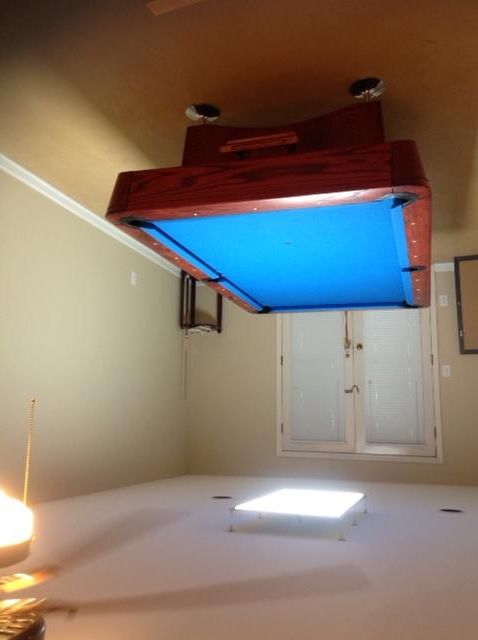You are spot on about the fluorescent flicker. We don't consciously see it because it's so fast but it's there and it is why late into pool tournaments, or long practice sessions our eyes get blurred and tired. Your brain picks it up and processes it an extra step as solid light. But doesn't have to do that with daylight our LED.
Here is niels Feijen new home table room....notice what light he uses....
http://m.youtube.com/watch?v=dt-isNeP0Gc
It seems to work just fine for him.
As I explained in one of my earlier post about building a $200 light and "you get what you pay for". Cheaper fluorescent ballast, bulbs and fixtures will produce much of what you are describing.
With that being said... ballast have come a long way from the
electromagnetic ballast of years gone by that operated on a much slower frequency of 100 or 120 Hz... causing the type of flicker that you are describing.
Top grade
"electronic" ballast operate at a much higher frequency rate converting 60 Hz of input power into 20 kHz – 60 kHz (usually 20 to 40 kHz). The rate of flicker from a premium grade
electronic ballast into a fluorescent tube (which will have "flicker" since it is an electrically charged gas), is at a rate so fast that the human brain basically can't accept it as anything other than constant light... unlike the magnetic ballast of yesteryear.
This can somewhat be compared to the range of human hearing. It is commonly known that the human brain will only allow the ears to hear within a range 20 Hz to 20 kHz. You can buy high end stereo equipment that produce a much broader range than this but... you're brain will never be able to detect it.
Fluorescent flicker and eye fatigue (powered by the proper ballast) will not likely cause the type of fatigue that you are talking about until the phosphor drops off in efficiency during use over time. After about 25,000 operating hours with a fluorescent tube it will only produce about 1/2 of it's initial output and at this point is where there is a flicker level where the brain can more easily be affected by it and it is at (or before) this point that the tubes need to be replaced.
Most people just put new bulbs in and wait until the lights start to strobe or burn out completely, not understanding anything about the principles of charging gases and how they break down over time.
I'm not defending fluorescent lighting as the better source over LED lighting...
it's not. But I am saying that it will get better and much more affordable over time (quite soon I'm guessing) and at this point in time... it's not cost effective to change over just yet.
I also stand by light diffusion being the ultimate way to illuminate a billiard table and refuse (myself) to hang an annoyingly bright square over my table that will cast hard shadows over everything while acting as an ambient flood light for the rest of the room. Yes... there is light % lost in diffusion... that's part of physics. But it is the best and at this time (as far as I know) the only way to soften hard shadows into soft.
As I said in an earlier post... show me one pool shooter who is using metallic diffusers over their table that is willing to get rid of them... or anyone who has changed away from them and says that the lighting on their table is better.
Show me a $600 LED panel that will
"properly" illuminate a 9' x 4 1/2' table head to foot... side to side... also defuse out the shadows... and not blind me if I happen to look up at it... I'll buy it. But it just doesn't exist... yet.
Good enough for someone else isn't what I'm going after in my room. The
optimum shooting environment is the goal.
But ya'll keep pushing and selling those lights to anyone who will buy them at their current price. The quicker you get the market flooded with them... the sooner the rest of us will gut out boxes and exchange to the newer
affordable versions of the LED's in a year or two.






